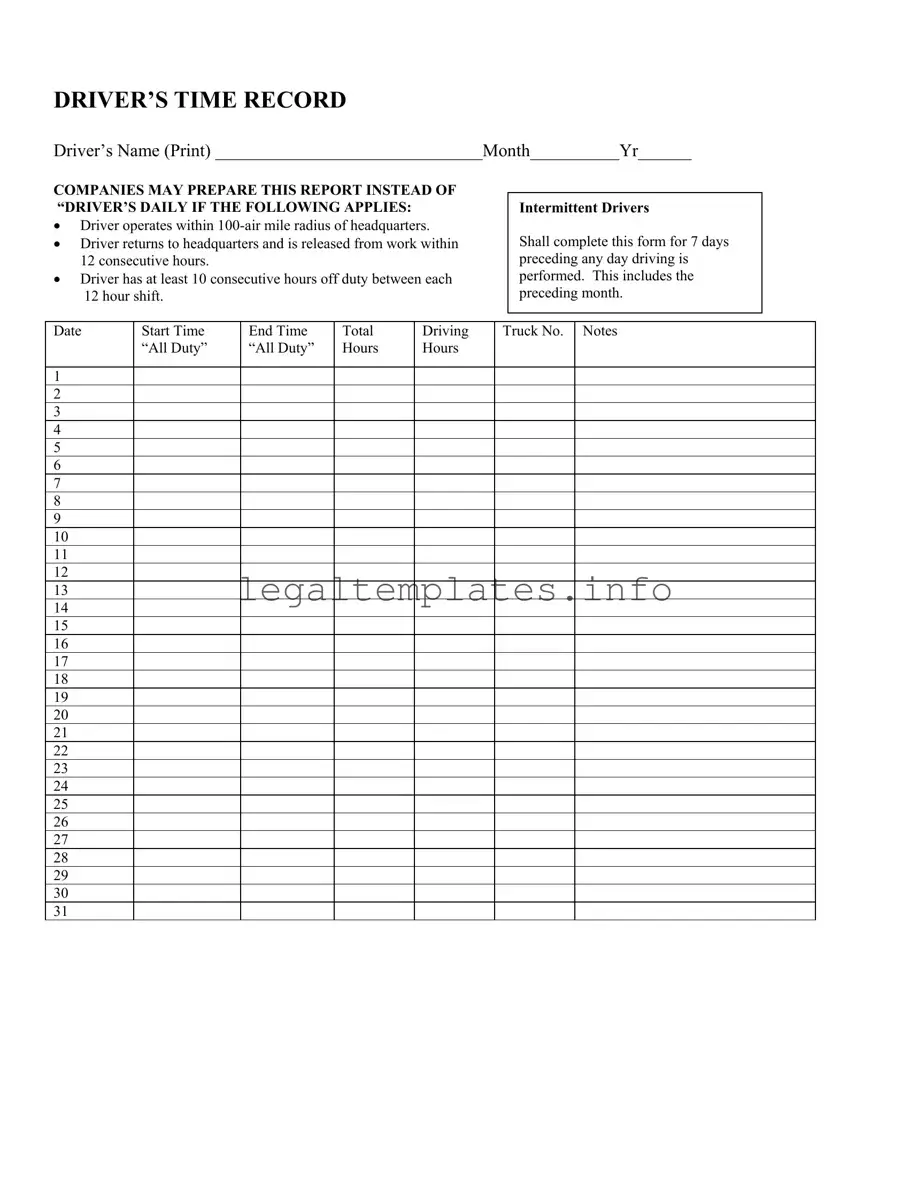Filling out a Driver Time Record form might seem straightforward, but small errors can lead to significant problems down the line. One common mistake is not printing the driver's name clearly at the top of the form. This might seem trivial, but in a fast-paced environment where many forms are processed, unclear handwriting can lead to confusion and errors in record-keeping.
Another area often overlooked is accurately recording the month and year. While it might seem obvious at the moment, incorrect dates can cause issues when trying to track a driver's hours over a period. This is particularly important for compliance with regulations regarding driving hours and rest periods.
Many drivers also forget to check if they meet the specific conditions that allow them to use this form, such as operating within a 100-air mile radius of headquarters and returning within 12 consecutive hours. Failure to meet these conditions requires different documentation, leading to non-compliance issues.
Incorrectly noting start and end times for each day is a significant error frequently seen on these forms. Precise times are essential for calculating total driving hours correctly and ensuring drivers are not exceeding legal limits, which can result in fines and penalties.
Another common error is failing to accurately calculate and enter the total driving hours for each day. This not only affects compliance with hourly regulations but can also impact a company's understanding of its operations and the workload on its drivers.
The section for the truck number is often neglected or filled in incorrectly. This piece of information is crucial for tracking which vehicles are being used and when, assisting in maintenance scheduling, and identifying usage patterns.
The notes section is frequently underutilized. Drivers should be encouraged to detail any relevant information here, including deviations from usual routes, delays, or incidents. Such notes can be invaluable for record-keeping, auditing, and addressing any discrepancies between reported and actual hours.
A mistake that's easily avoidable yet commonly made is not updating this form for seven days preceding any day driving is performed by intermittent drivers. Keeping records updated helps in maintaining compliance and ensuring that all necessary information is available when needed.
Lastly, failing to include the preceding month’s records for intermittent drivers can lead to incomplete record-keeping. This omission can obscure patterns in driving hours and rest periods, potentially masking issues with overwork or non-compliance.
Attending to these details when completing the Driver Time Record form not only ensures compliance with regulatory requirements but also aids in effective fleet management and driver welfare.


